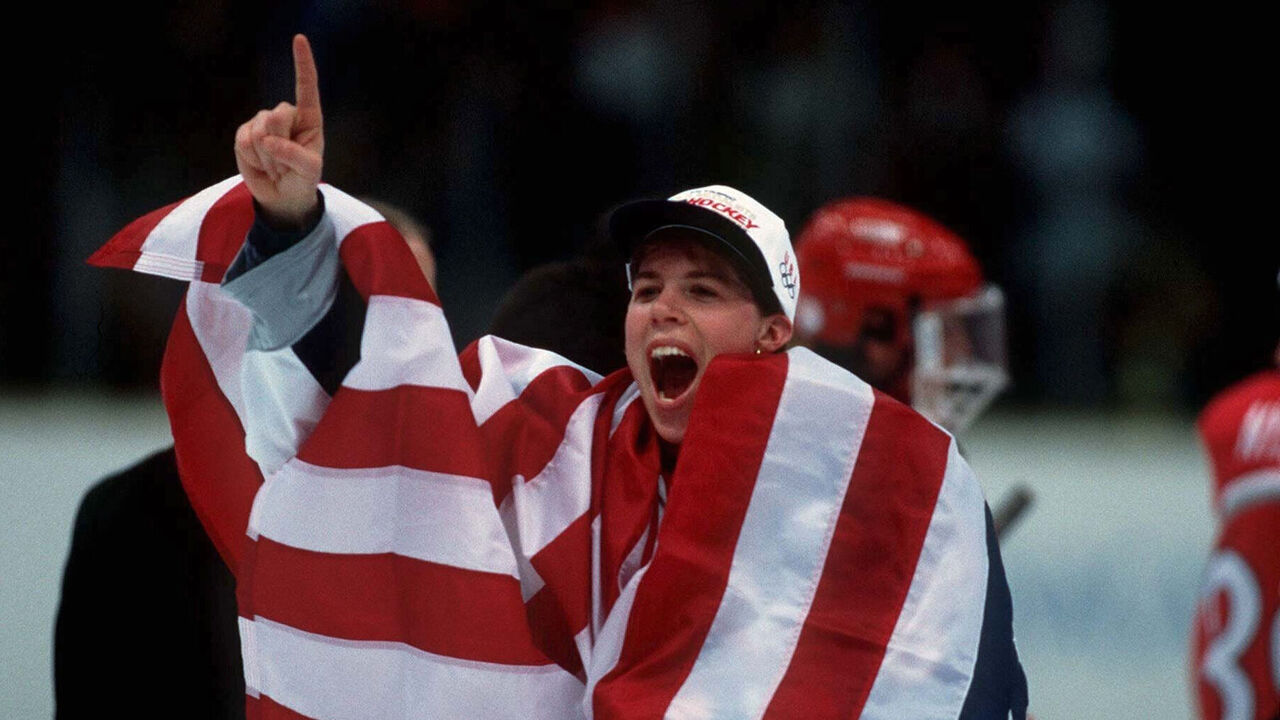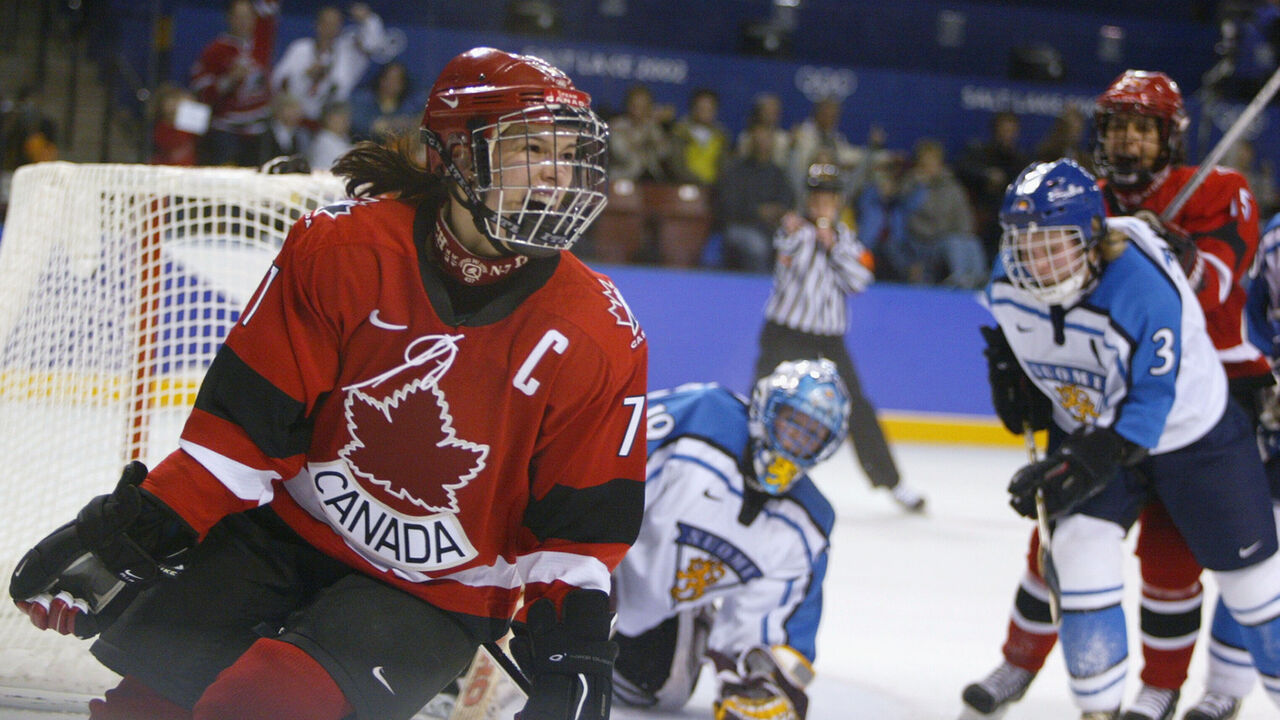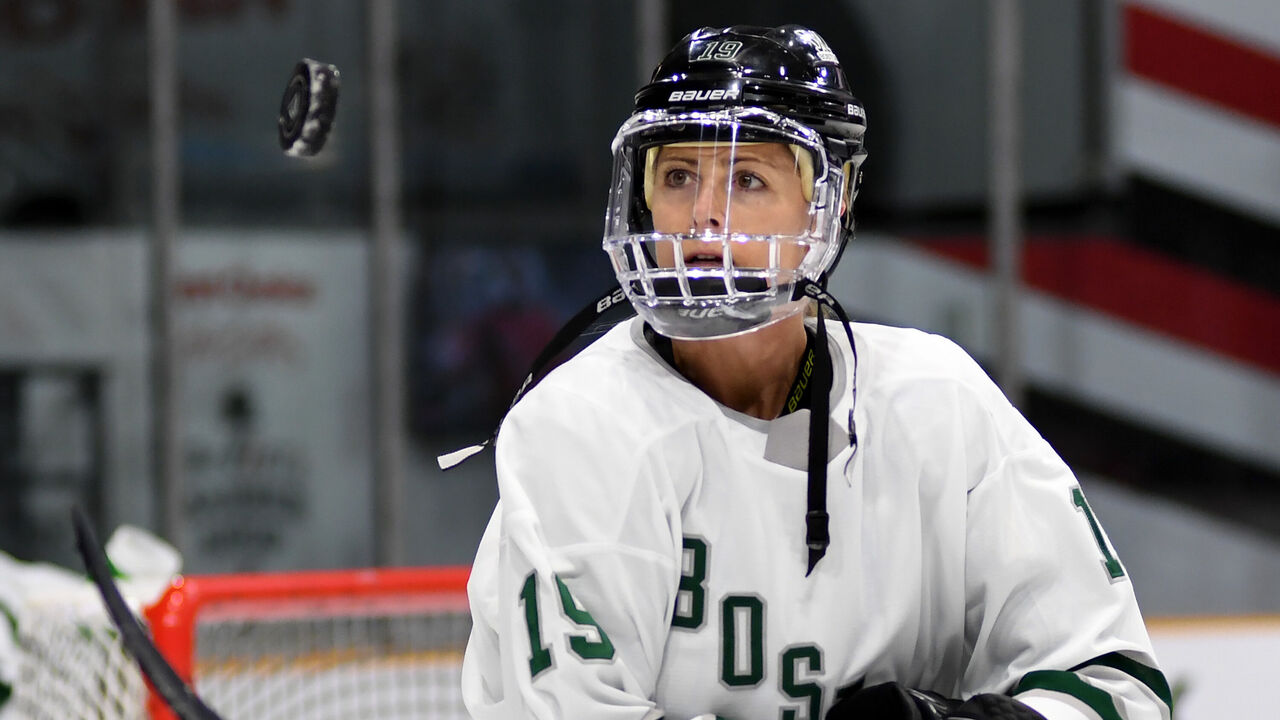'Sky's the limit': What the PWHL's success means
This article was written by Jay Neemeyer as part of the Professional Hockey Writers Association and To Hockey With Love Mentorship Program. See the bottom of the article for more on the program.
During warmup for the PWHL's second Takeover Weekend game in March, fans inside Pittsburgh's PPG Paints Arena held up signs announcing where they'd travelled from.
Toronto. Montreal. Washington, D.C.
Those three cities, along with Pittsburgh, were among many that hosted events for the Professional Women's Hockey Players Association (PWHPA), an alliance of elite North American-based players that from 2019-2023 strove for a singular and sustainable pro women's hockey league.
The PWHPA formed the core of what became the PWHL Players Association (PWHLPA) in February 2023. The PWHL was founded last summer and play officially began on New Year's Day 2024.
"There were a lot of ideas swirling around about how to get to this point," forward Sarah Nurse said postgame in Pittsburgh on March 17.
Nurse was a member of Team Adidas when the PWHPA stopped by the Penguins' practice facility around U.S. Thanksgiving in 2022, as part of the 2022-23 PWHPA Dream Gap Tour. She's now on the PWHLPA executive committee.
"Definitely thinking about being here two years ago and actually coming back here with a professional league - I don't think many people thought we were going to be able to do that," Nurse said. "We've continued to exceed expectations and I know that the sky's the limit."
Over a third of a million people attended PWHL games in the league’s inaugural season. Tens of thousands more watched on television and streaming platforms. Several dozens of those views came from Finland, where goalkeeper Kassidy Sauve played pro this past season. Sauve tried out for PWHL New York but was among the first round of cuts. She watched games with her Finnish teammates when travel and time zones allowed.
"Some of the games were at tough times for us to watch, but if we were on the bus on our way back from a trip and it was an earlier game local time here, then we would watch the games," Sauve said. "(Teammates) think it's pretty cool how many people are in attendance at the games."
The average PWHL attendance - more than 5,000 per game - surpasses the average attendance figures for the first Olympics to feature women's hockey, in 1998. Many of the PWHL's players grew up after the Nagano Games, but there was never a singular, stable league for them to aspire to in non-Olympic years.

In the two and a half decades between the introduction of women's hockey at the Olympics and the formation of the PWHL, there were many leagues that aspired to be North America's primary women's hockey league.
The Western Women's Hockey League (WWHL) was founded in 2004 and lasted until 2011. The Canadian Women's Hockey League (CWHL) formed in 2007 and absorbed several WWHL teams before ceasing operations in 2019. There were even two leagues that used the name "National Women's Hockey League" (NWHL). The first was established in 1999 and shuttered in 2007, with many of its players moving into the CWHL. The second NWHL, which later rebranded as the Professional Hockey Federation, operated from 2015 to 2023.
Cassie Campbell-Pascall, a Canadian women's hockey legend who played in the first NWHL and served in executive roles for the CWHL, and who's now a PWHL special advisor, provides a unique perspective based on all she's seen over the years.
"Knowing as much as I do behind the scenes, it just seemed like people wanted control rather than what was best for the game," she said.

PWHL Ottawa forward Becca Gilmore was born in Massachusetts two days before the first women's hockey Olympic medals were won. She has her own place in women's hockey history as the PWHL's first undrafted free-agent signing on Nov. 6, 2023.
Gilmore had a women's hockey pioneer in-house growing up. Her mother, Deb (Rudman) Gilmore, played.
"She grew up in a world where women's hockey definitely did not exist in terms of female-only teams," Gilmore said of her mother. "I've heard the stories of her waking up early and trying to get to any rink that would let people in and skate with her brother."
Gilmore's mother was a member of Bowdoin College's first women's team, in Brunswick, Maine, playing for the Polar Bears from 1978 to 1982.
"She helped launch that college program, which was really cool for me to hear and definitely makes me grateful for being able to play in a professional world," Gilmore added.
Ben Smith coached the 1998 U.S. women's Olympic team to gold. As he puts it, college hockey has been the "feeder system" for high-level women's hockey for decades. The majority of that 1998 roster came from schools in the northeast, like Northeastern, Providence, Brown, and Dartmouth. At the time, women's college hockey hadn't expanded out of the New England area.
"The Division I college teams started to sprout up (after the '98 Olympics)," Smith said. "And that gave the girls and women opportunities that never existed before."
There are now 44 recognized Division I and II women's college hockey programs governed by the NCAA. Canadian institutions feature 35 programs, under the governance of U Sports. Since the NCAA began holding the National Collegiate Women's Ice Hockey Championship in 2001, Minnesota-based programs have won a combined 11 times - six titles for University of Minnesota-Twin Cities and five for the University of Minnesota-Duluth.
Three-time U.S. Olympian Gigi Marvin played college hockey at the University of Minnesota from 2005 to 2009. She'd been playing hockey since she was 2 years old but didn't play on an all-girls team until she was in eighth grade. She said her high school formed a girls' varsity team "right after the ('98) Olympics," but she wanted to stay with her friends on the boys team she was on at the time.

"Girls' hockey hadn't caught on yet, but everyone where I lived believed in equality and allowing me as much ice time as I needed," Marvin said. "They viewed me not just as a girl, they viewed me as a hockey player, and one who could skate and play just like their sons could."
That wasn't the case for all female hockey players before Nagano. Manon Rheaume, known among hockey fans as the first woman to dress in an NHL preseason game for the Tampa Bay Lightning in 1992 and 1993, said no other girls were playing organized hockey when she started playing in her backyard with her brothers. She played with boys and later with men for the majority of her career.
"It's amazing to see. When I started to play to now, seeing a women's professional league, and how many girls are playing, and that young girls can start playing hockey at 5 years old and play on a girls' team ... it's amazing, the growth of the game on the women's side," Rheaume reflected.
The Athletic's Hailey Salvian reported in April that USA Hockey crossed 100,000 registered female players for the first time in 2024. In the late 1990s, there were less than one-tenth that total. Smith estimated USA Hockey had "about 6,000 registered female players from the age of eight up until the ages of 60."
It took longer than she hoped, but Campbell-Pascall believes women's hockey finally has the league its players always deserved.
"Those of us that have been around the game a long time, you always wish that it would (have happened) quicker," Campbell-Pascall said. "But I think we always knew the evolution of where the game would get to would be what we have now. I think we're right where we need to be, and I think the recent success shows that maybe we went through the right process."
This article was written by Jay Neemeyer, who's part of the Professional Hockey Writers Association and To Hockey With Love Mentorship Program. The program pairs aspiring writers with established members of the association across North America to create opportunities for marginalized people who aren't traditionally published on larger platforms covering hockey. To Hockey With Love is a weekly newsletter covering a range of topics in hockey, from the scandals of the week to critical analysis of the sport.